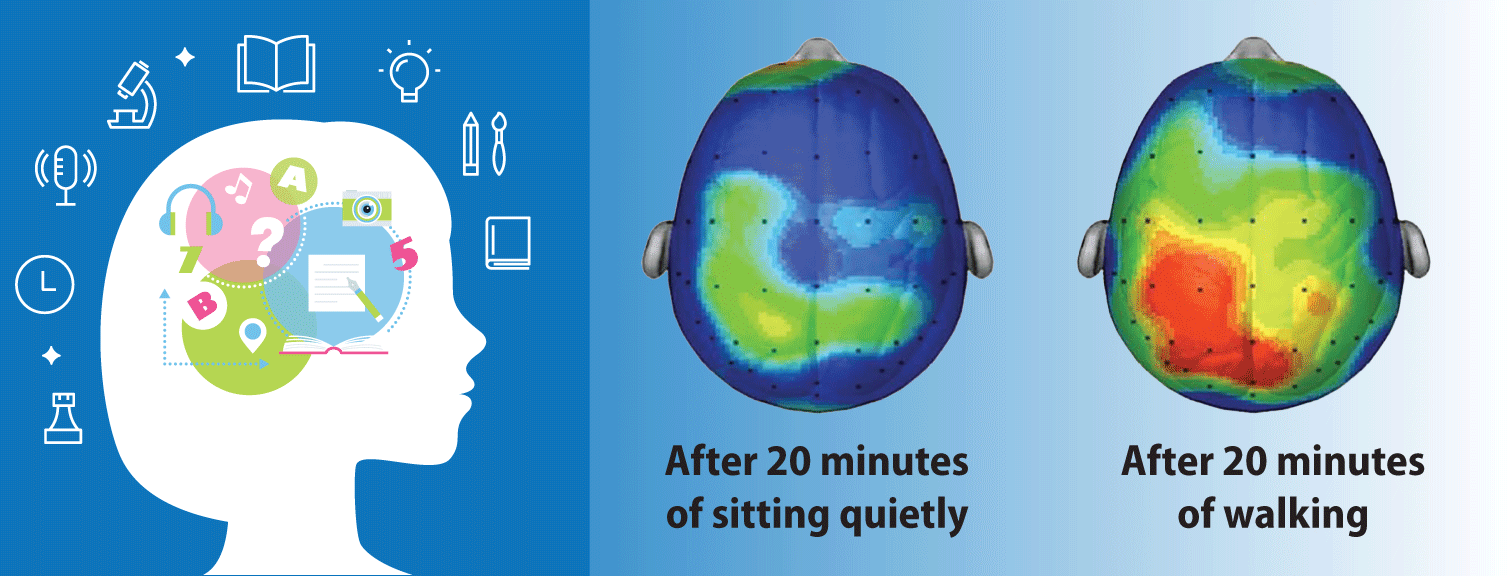
Research/Scan compliments of Dr. Chuck Hillman, University of Illinois
Did you know physical activity encourages greater brain activity as well as general health? And that’s not all. Stanford Neuroscientist Andrew Huberman recommends viewing morning sunlight to increase metabolism, focus, sleep, and immune system function. Movement and sunlight are among his top five activities to improve performance and health.
So, when you and your child walk or ride a bike to school, you’re getting a triple benefit: a more relaxed morning commute, a dose of brain stimulation, and an immune system boost. It could be the single best thing you do for yourself and your child every day.
A Walk & Roll Revolution
To raise awareness of how physical activity makes kids healthier and happier, Safe Routes interviewed Juliet Starrett, a Marin mom, co-founder and CEO of The Ready State, and coauthor (with her husband Kelly) ofThe New York Times best-seller Built to Move, about how she started a walking school bus at her children’s elementary school in Terra Linda.
Juliet found out that in the 1970s, 85 percent of children walked or rode a bike to school. Then, she and her husband decided to set the alarm clock 20 minutes earlier to have enough time to walk to school with their two daughters. That simple decision created a cascade of benefits.
“The walk was an opportunity to spend some uninterrupted, quality time together without cell phones,” she said. “Our kids picked flowers or looked at worms on our walk. It was a very different experience than entering from the drop-off lane.”
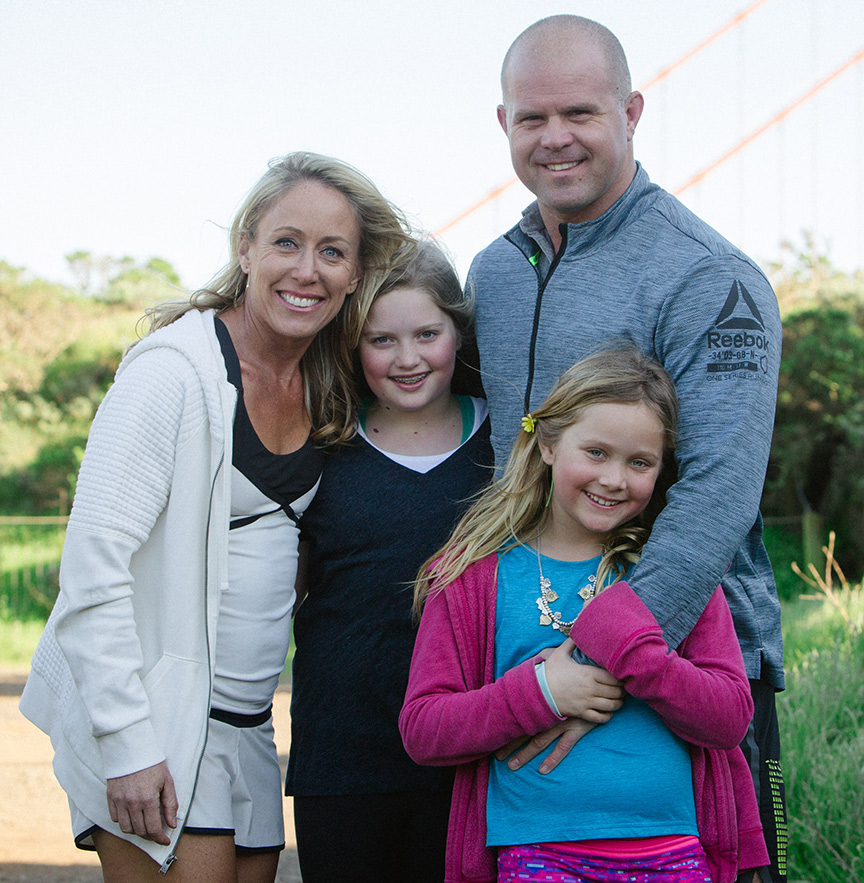
Juliet soon read about “walking school buses,” a concept advocated by the federal Department of Transportation, to encourage children and parents to walk to school together. She made a flyer advertising it at Vallecito and outlined meeting places and a route where parents could drop off their kids “rain or shine.”
At first, about 10 children joined the Starretts on their route. Over time, however, more families came along and some parents parked and walked if they lived far away. Friendships formed. On its biggest days, the bus included 40 people.
“Parents would say, ‘I can’t walk because I have a full-time job,’’ Juliet said. “But I also had a full-time job and I still had time to walk in the morning and get to the city by 9 am. It takes a little bit of intention and a little bit of a mindset change to make walking a part of your day.”
Safe Routes to Schools Program Director, Gwen Froh, is set to attend the National Bike Summit in Washington, D.C., in mid-March. Her mission? To showcase Marin’s e-bike education programs nationally. Froh earned a special invitation from the League of American Bicyclists (LAB) due to the Marin County Bicycle Coalition (MCBC) and Safe Routes to Schools’ early provision of e-bike safety classes for teens.
“Two years ago, when I reached out to the LAB and our national Safe Routes to Schools partners to ask if anyone had developed an e-bike safety curriculum for students, no one came forward. Concerns about teen e-bike use were percolating throughout the county and we wanted to act quickly to address them.”
Froh and her team started researching the laws governing e-bike use and the necessary skills for tweens and teens to safely ride them on our streets and pathways.
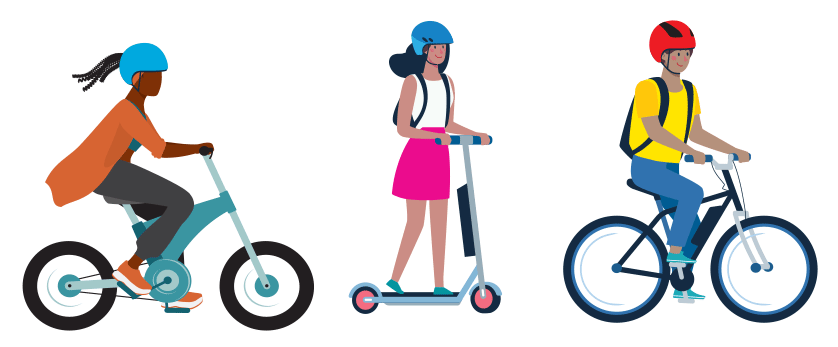
The Safe Routes’ Lead Instructor, Tyler Randazzo, researched different kinds of e-bikes, delving into various brands and their capabilities to exceed the maximum speed allowed for under 16-year-olds. A red flag was raised when some Class 2 manufacturers were hiding the recommended age of use of 16 and above in their fine print.
Froh adds, “Tyler kept hearing from students in class that they knew how to switch the throttle bikes to exceed the maximum 20 mph speed limit regulated by CA law.”
Froh and Randazzo provide dedicated e-bike education in middle schools and teach MCBC’s Teen E-bike Smart Marin classes providing “on-road” education. “We teach students how to stop quickly and to maneuver around obstacles on devices that are extremely heavy and travel at twice the speed as conventional bikes for this age group.”
If you’re planning to buy your student an e-bike, make it a Class 1.
The Safe Routes team also reached out to parents about safety concerns. Students and parents have been informed of the laws governing e-bike use, including which devices are not considered e-bikes. These include those that can exceed 20 mph on motor power alone (no pedaling); the National Highway Traffic Safety Administration considers them “motor vehicles” instead of e-bikes. That’s why the fastest e-bikes are “out of class” and require a license and registration for those over 15 years of age.
Froh concludes, “Marin Safe Routes to Schools has worked successfully with school communities to get more students on bikes for the past 24 years. As dedicated cycling advocates, we will always prioritize children’s safety first and foremost. We are committed to guiding parents in making informed, legal decisions based on our extensive professional experience teaching kids for over two decades. I look forward to carrying this message nationally.”
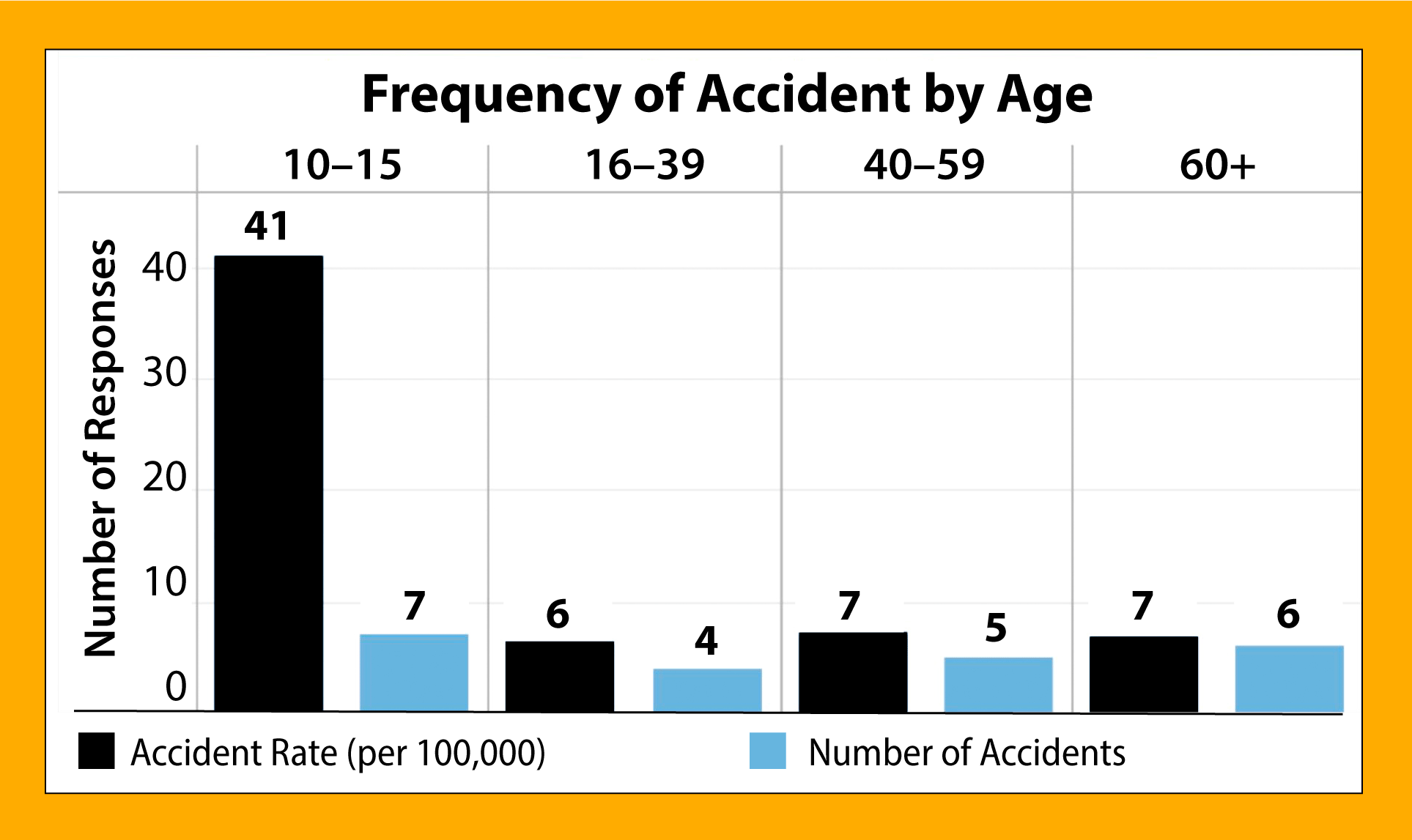
Chart from Marin Health and Human Services Dashboard, (October 7, 2023 – Feb. 25, 2024). Data shows that 10 to 15-year-olds riding e-bikes are six times more likely to have a serious crash than any other age group. Serious crashes have included severe head trauma and pelvic injury comparable to what occurs when crashing a motorcycle.
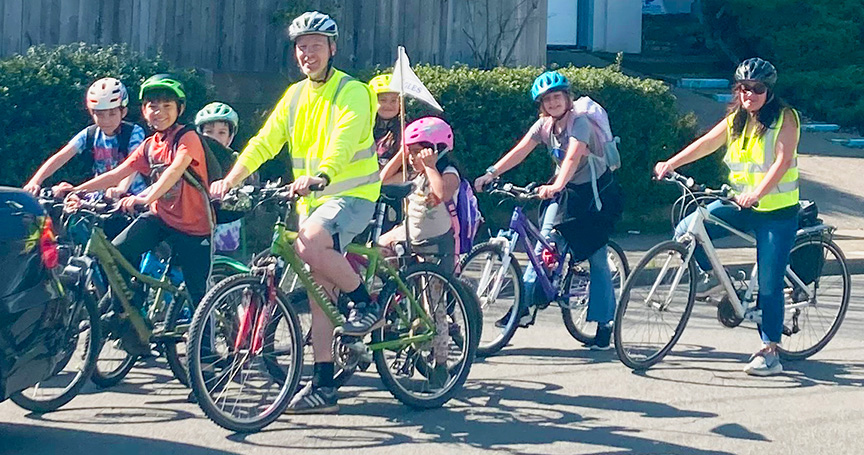
Jeff Shankle, a parent from Rancho Elementary, hates to sit in traffic. That is why, for a long time he rode his two sons to school on his cargo bicycle or ran with them to school. Last year, when he thought his children were ready, the three of them started to ride their own bikes.
Inspired by the sight of the family group, some neighborhood kids started asking if they could join the fun. They had organically formed a bike train, which is a group of children on their bikes led by an adult. Due to their persistence and organization, in 2023, the group of eight won the Safe Routes to Schools Bike Hero Award.
Shankle explains how the bike train has evolved over time. They started including others last year, when his sons were in second grade, using word of mouth. The Shankles know many families in the neighborhood, so the children would ask others or they got asked themselves. The father of two explains that, after that, he would reach out to the parents and talk about how it would work. Eventually, he got so many inquiries that hejust started copying and pasting the same text message.
Shankle emphasizes that getting others to be part of his bike train has not been a hard sell at all: “Really, I think, children motivate each other!” he said. “They just want to be with their friends. As much as we parents would like to think we are that persuasive, it is really the kids that keep each other coming back.”
The dad has found that, in order to propagate the number of bike trains to the school, it is important to invite families interested in starting their own to join in at least once. He feels that that offers the newcomers the confidence that they can do it too, with the certainty that riding in a big group is much safer than doing it alone.
How to Start a Bike Train or Walking School Bus
On March 28, 6:00-7:00 pm, elementary school parents and caregivers are invited to attend a Zoom meeting to learn the basics for starting a bike train or walking school bus. Veteran volunteers will offer tips for organizing and timing your route, how to recruit other parents to help lead the group, and how to participate if you live far from school. RSVP: [email protected]
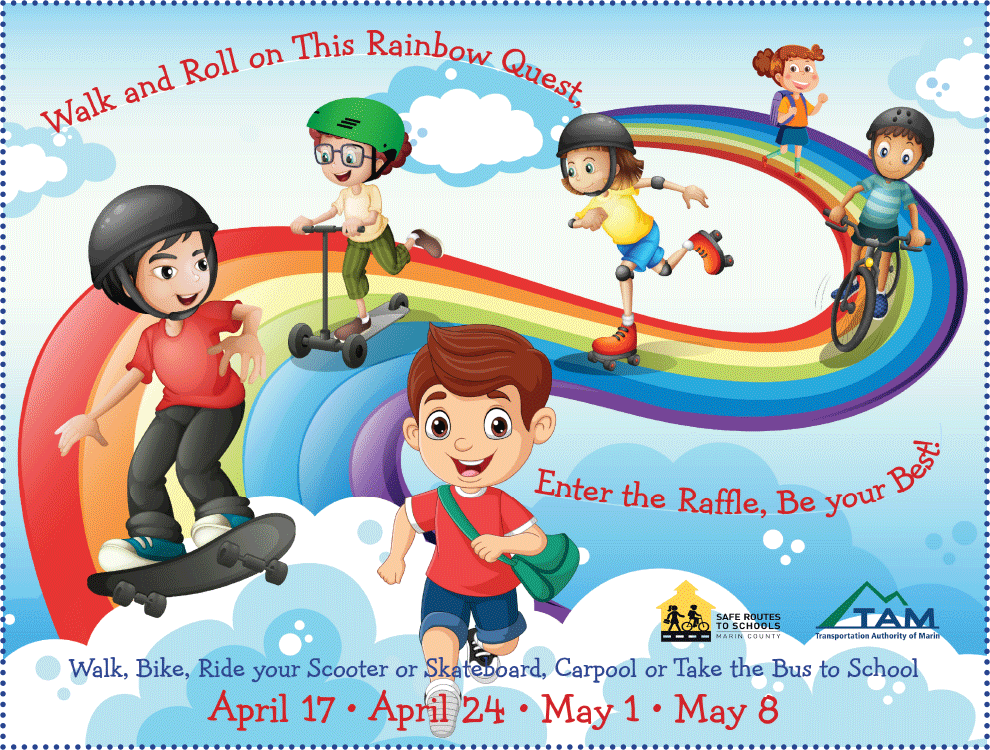
Pre-stamped cards will be handed to thousands of students on the first day, stamped during the following contest dates, and finally collected on May 8. Parent volunteers and school administrators will use the returned cards to conduct a drawing for up to two Razor scooters per school site.
In sponsoring a weekly event, Safe Routes to Schools hopes to help create a healthy habit and send a message that walking and rolling to school is easy and sustainable.
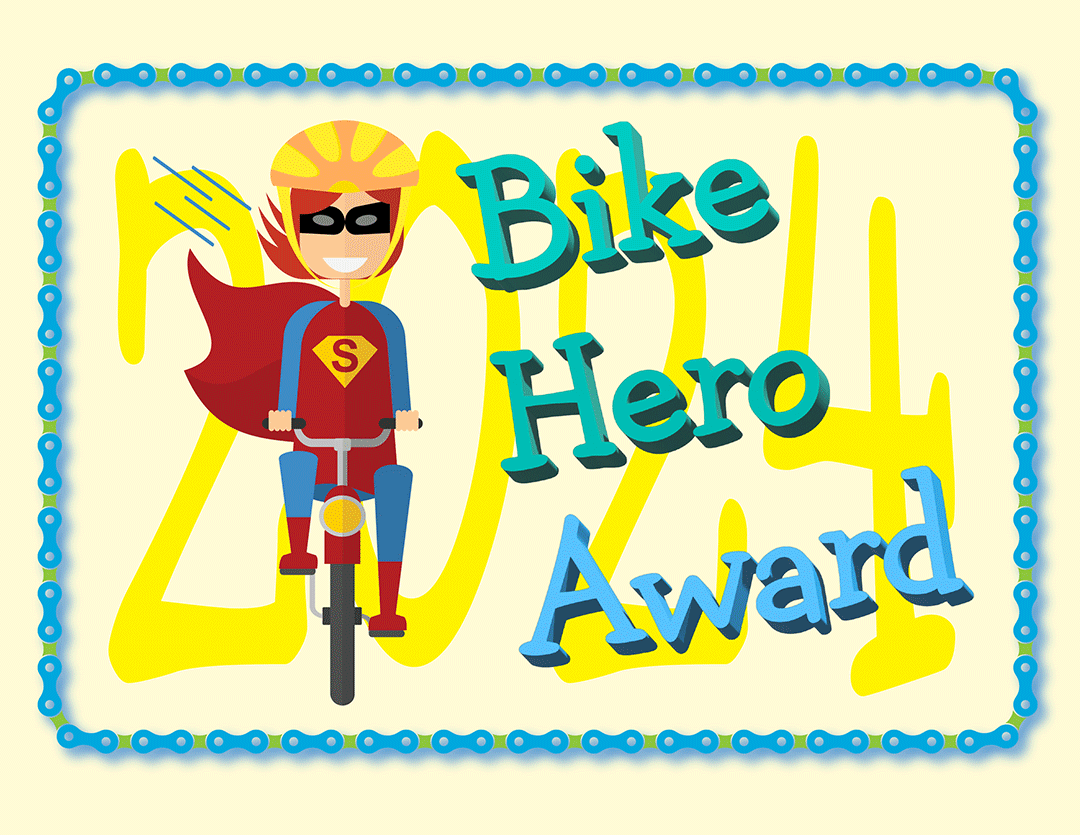
Nominations for the Safe Routes Bike Hero Award are now open until May 31st. Bike Heroes are great “roll” models: They are students who get up early to ride regularly, inspire others to bike, obey all rules of the road, and have FUN biking. Parents, administrators, teachers, and friends are invited to nominate their favorite student cyclist for the county-wide award. Two nominated elementary school students and two middle school students will be selected in early June and will be awarded $50 gift cards.
Nominate your BIKE HERO HERE!
View past 2023 winners
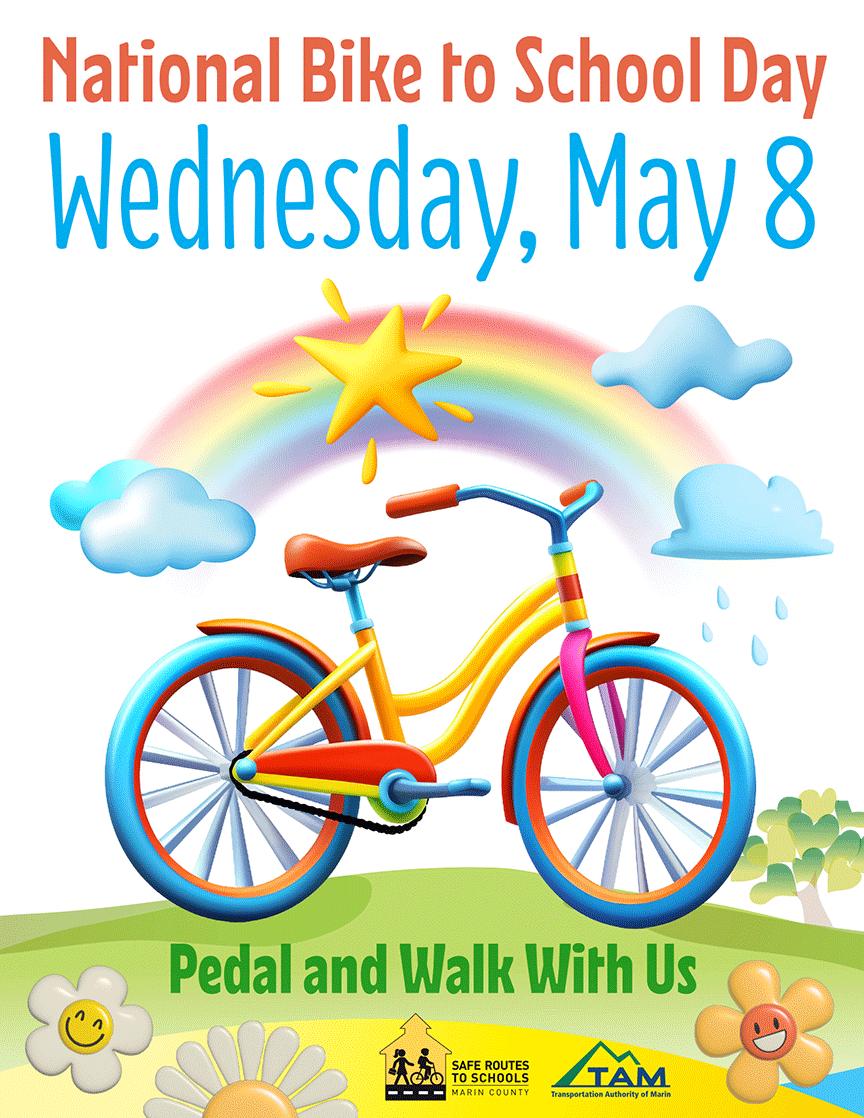
Grease up those chains for National Bike to School Day on Wednesday, May 8, 2024. All Marin public and private schools are encouraged to join the day of celebration benefiting healthy students and the planet. Come one and all – even those who live too far, by parking and rolling (or walking) a short distance to school. Volunteers will hand out reflective, neon stickers to the small pedalers while other prizes will be available for the middle and high schoolers at participating schools.
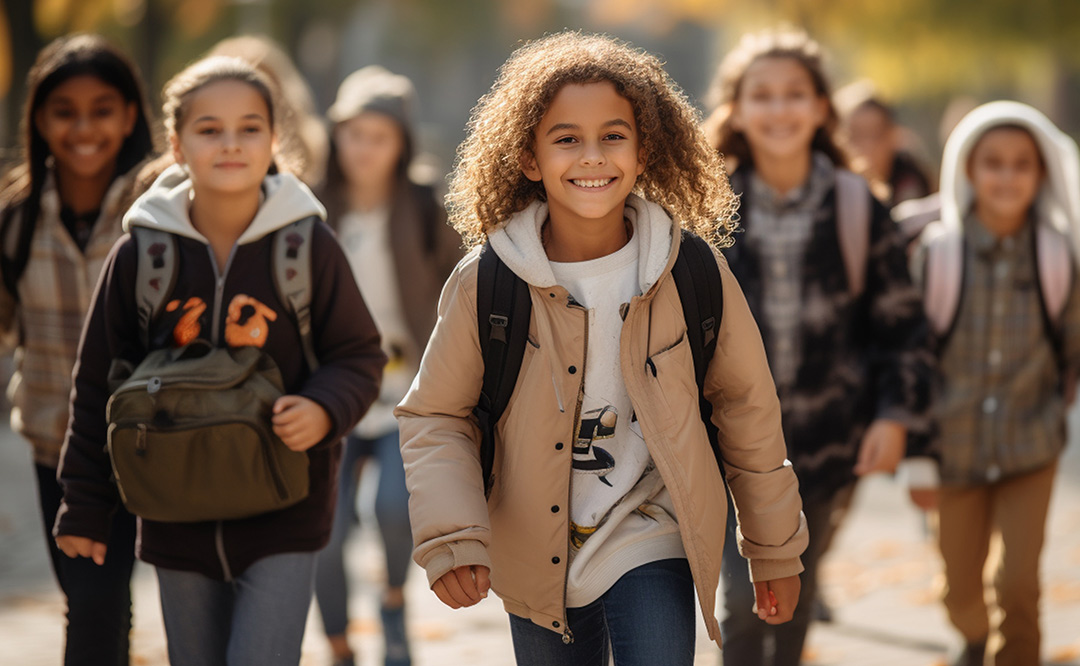
“Because SEI is already working with students in many of Safe Routes schools, this partnership will allow for increased awareness of our mission of safety for all students,” said Gwen Froh, Safe Routes to Schools Program Director.
The new partner is a natural fit for Safe Routes to Schools, given that it provides leadership training and guidance to students who want to help implement different programs in their campuses. “Students are often great ambassadors and can effectively promote the Safe Routes to Schools programs,” Froh points out. Through SEI’s partnership, for example, students at Hamilton have already completed a walk audit to provide input on safety needs along routes to their campus.
Alexis Fineman, SEI Associate Director, explains that her organization is partnering with Safe Routes to Schools to build student agency and leadership skills for transportation. She points out that SEI’s expanded program, Youth Leading Active Communities (YLAC), is designed to engage students at Marin schools that present obstacles to high levels of active transportation. SEI’s goal is to promote key elements of the program into the classroom, including the identification of suggested routes and support for active transportation across campuses.
The two organizations had previously partnered on a project at Terra Linda High School in 2015.
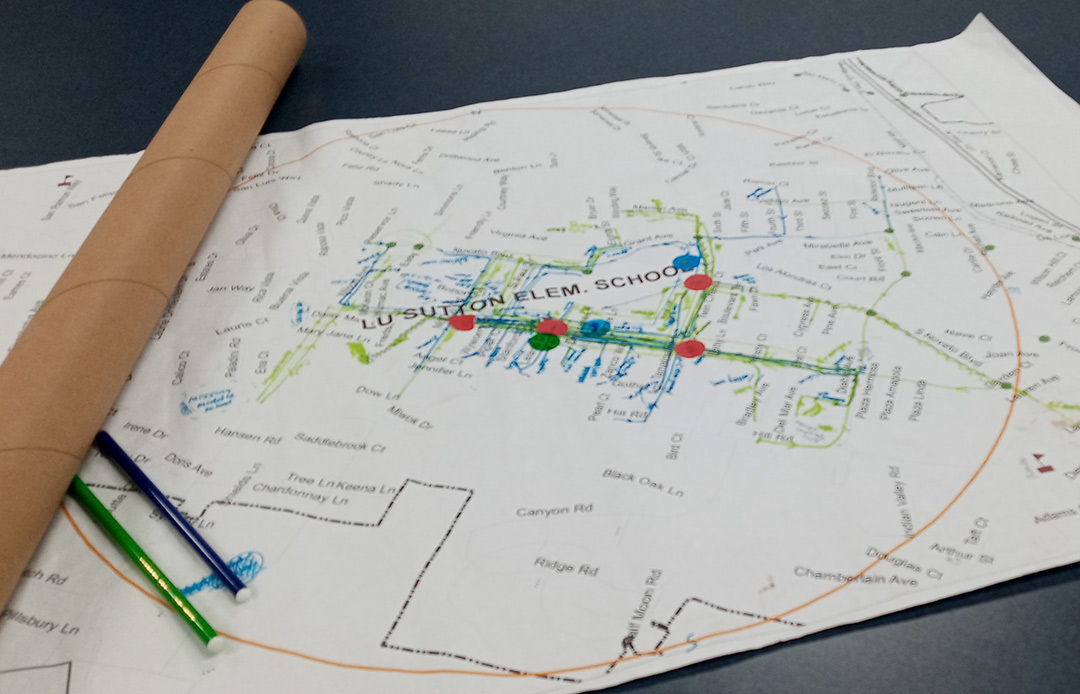
The City of Novato has a new School Travel Working Group, formed to explore the barriers and opportunities for green travel and to develop programs that would best motivate Novato families to walk, roll, and carpool to campus. Since yellow bus service to schools was cut over a decade ago, many families got into the habit of driving students to campus.
To address the high rate of school-related traffic, Safe Routes to Schools has partnered with the City of Novato’s Sustainability Coordinator, the Novato School District communications specialist, Sustainable Schools, and the Complete Streets and Pathways Oversight committee members. The team’s goal is to provide access to safe and healthy travel for all students. Traffic reduction is instrumental to this goal. The committee, created in late 2023, circulated a parent survey and held a mapping workshop for all Novato elementary schools. The group will determine the best strategies for increasing active travel in Novato, including exploring high-priority infrastructure improvements.
Partnerships strengthen the Safe Routes to Schools programs. The adage “it takes a village” definitely applies to changing travel behavior. The systemic approach to Safe Routes to Schools – education, enforcement, engineering, and encouragement – has proven successful time and again. In bringing together all these entities, Safe Routes to Schools and its partners multiply the ability to reach and influence the community.
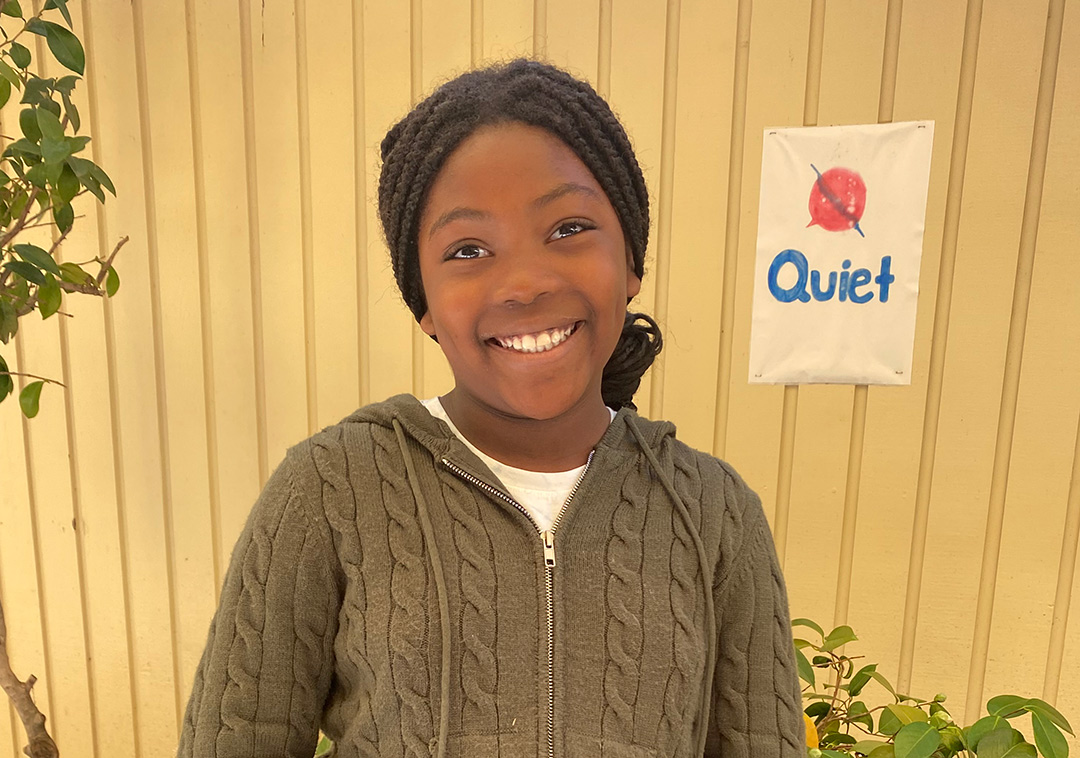
Last year, fourth grader Myrioline Toussant heard an announcement over the loudspeaker at her school, Ross Valley Charter, that made her heart race.
“They said I won a bicycle. I felt so happy,” she said.
The bicycle, part of a donation to Safe Routes to Schools made by Richmond bike manufacturer Cleary Bikes, was the raffle prize on National Bike to School Day last spring.
Myrioline says it has five gears and is black with pink on the wheels. “I love the colors,” she said.
Recently Myrioline joined the “bike train” organized once a month by parents at Ross Valley Charter and Manor elementary schools (learn more about the Safe Routes webinar on March 28, from 6:00-7:00 pm – How to Form a Bike Train). Her uncle drops her off at the meet-up spot about one mile away from school. She says that when she is unable to join the bike train, she carpools or takes the bus with friends instead.
The bike is the first Myrioline has owned. She learned to ride on her brother’s bike but it had training wheels. “It felt good to ride my bike the first time,” she said.
“She was the perfect person to win it,” said Page Hersey, director of Ross Valley Charter, who made the announcement over the loudspeaker. “She works so hard and her family are great members of our community. We were thrilled.”
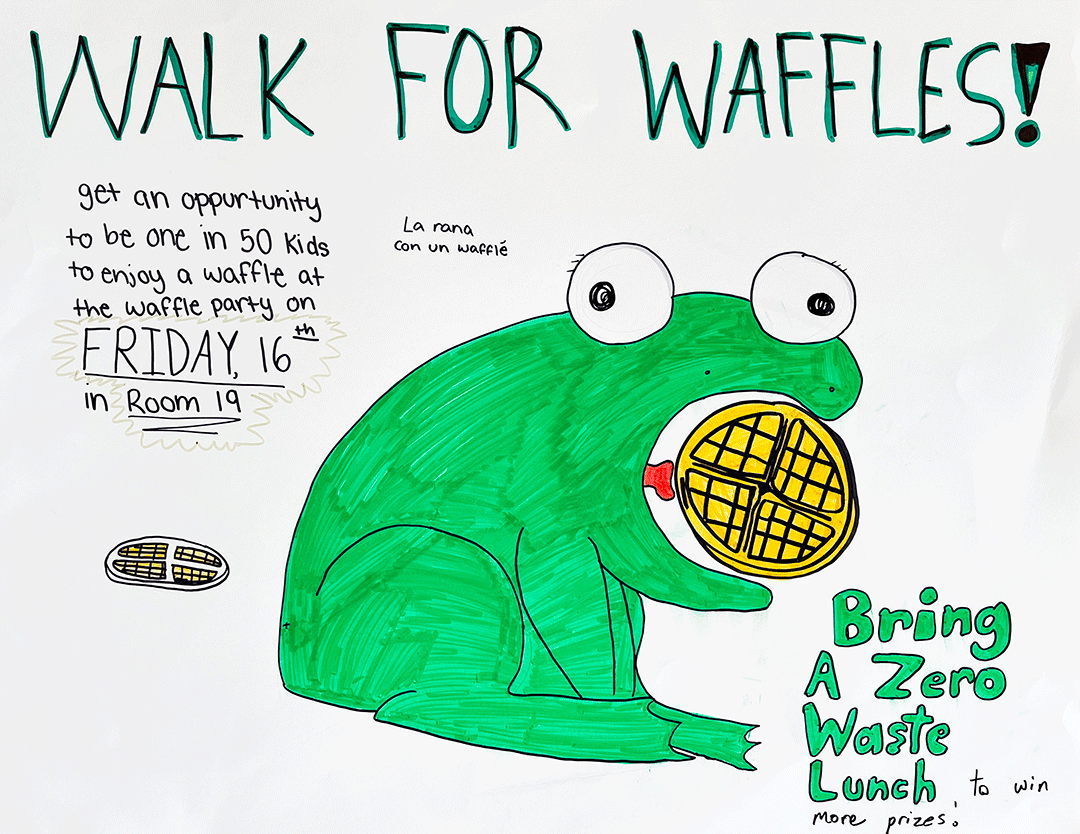
Over 200 students from Kent Middle School walked or biked to school on February 16 for the opportunity to win one of 50 spots for a waffle party sponsored by Kent Eco-Action Club, Zero Waste Marin and Safe Routes to Schools. The waffles, topped with whipped cream, were served to the winners during lunch time.
To win, the participants approached the welcome table and pulled out a ticket from a bag containing raffle tickets with either a sad or a happy face. The recipients of the happy face were invited to the waffle party. Five toasters and 12 students working non-stop served up the fun.
Sad face? Students were instructed to go to the Zero Waste Marin table where they could learn about waste reduction and have the opportunity to win water bottles and bamboo cutlery.
- Ross Valley – Friday, April 19, 2024 at 10 AM
- Novato – Wednesday, April 24, 2024 at 5 PM
- Kentfield – Thursday April 18, 2024 at 9:30 AM
- Reed – Thursday, May 2, 2024 at 10 AM
- West Marin – Tuesday, May 7, 2024 at 5 PM
- San Rafael – Wednesday, May 1 at 5 PM
- Sausalito-Marin City – Thursday, April 25, 2024 at 5 PM
- Larkspur-Corte Madera – Thursday, May 9, 2024 at 4 PM
- Ross – Monday, April 22, 2024 at 10 AM
- Mill Valley – Thursday, May 9, 2024 at 9:30 AM
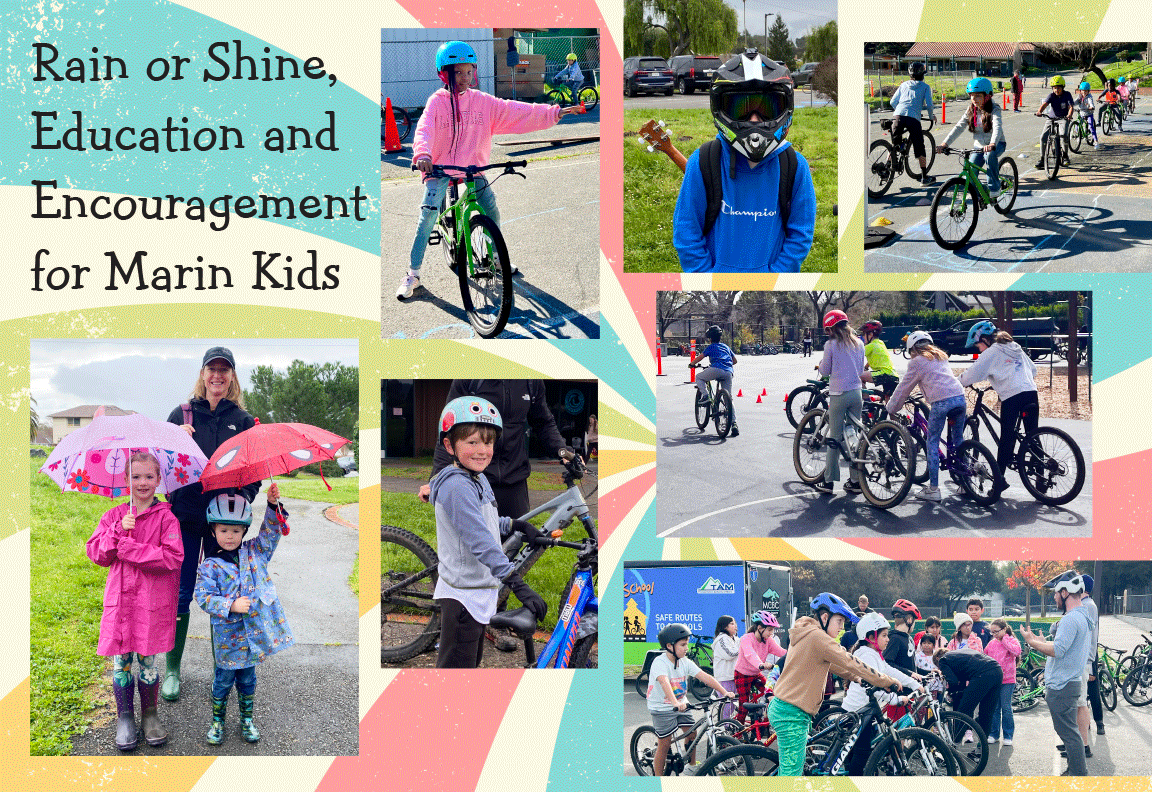
Thousands of students across Marin County have braved the rain and, sometimes the cold, to benefit from the cycling and pedestrian safety classes offered by Safe Routes to Schools in 2024. Even many more children participated in the February and March encouragement events, during which they collected incentives and raffle prizes. Both the education and encouragement programs have been received with joy and plenty of smiles.
